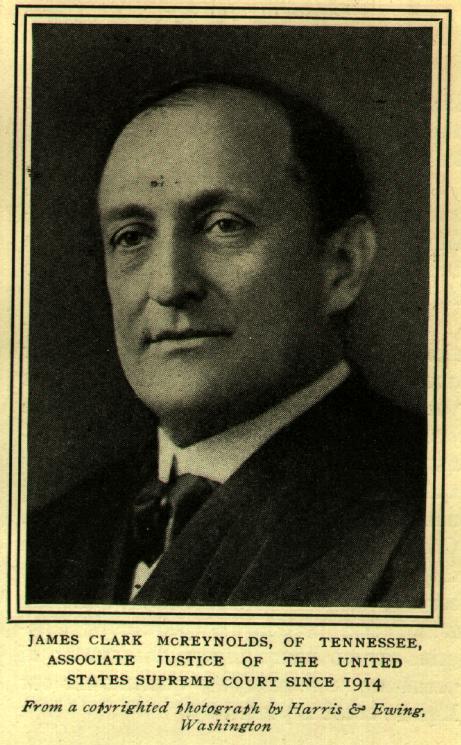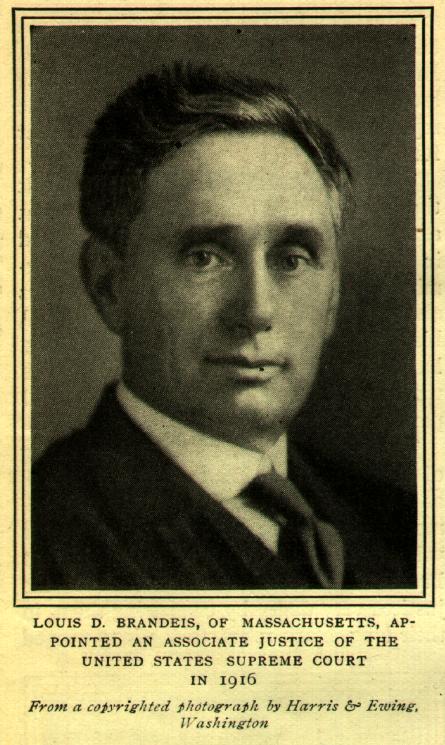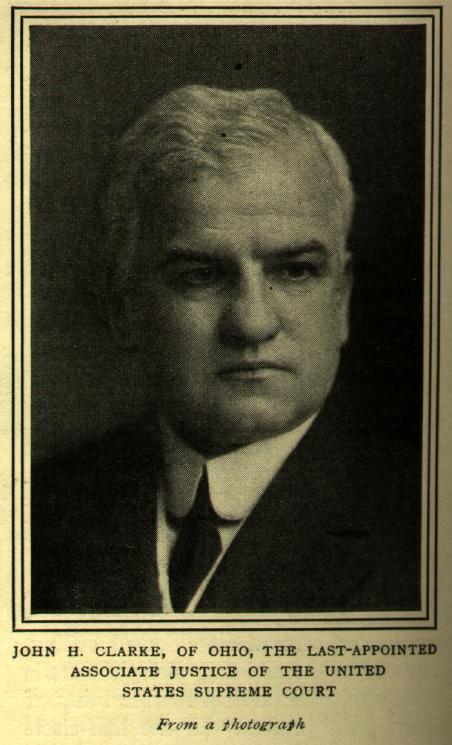| Our Highest Court | ||
THE SUPREME COURT CHAMBER
The room in which the court sits is an impressive chamber, although it is generally admitted to be too small. Until 1859 it was the Senate Chamber, the Supreme Court then occupying a room on the lower floor of the Capitol, where the law library is now located. The Senate outgrew its original abode and moved to new quarters in the north wing of the Capitol, bequeathing its former home to the Supreme Court.
The decorations are simple, but rich in design and very effective. The room is semicircular, with a low, domed ceiling. Half-way to the molding, along the walls of the semicircle, are set marble busts of former great justices. In the half-circle are the seats for the spectators, facing the long, straight bench where the judges sit. In front of the bench are tables for the lawyers, and at each side are desks for the reporters, court crier, marshal, and other functionaries.
The chief justice occupies the chair at the center of the bench, and at his right and left the associate justices are seated in the order of their precedence, determined by length of service. The justices always appear clad in the traditional black-silk judicial robes, although they have dispensed with the ancient wigs which were formerly used, and which still persist in England.
There is no law that requires the wearing of the robes, but it is a
custom sanctioned, as the lawyers say, "from time immemorial," and
there is no indication that it will ever be discontinued. It is said that
President Lincoln made some of the justices very angry by comparing
them, in their long black robes, to the long-winged

JAMES CLARK MCREYNOLDS, OF TENNESSEE,
ASSOCIATE JUSTICE OF THE UNITED STATES SUPREME
COURT SINCE 1914
From a copyrighted photograph by Harris & Ewing,
Washington

LOUIS D. BRANDEIS, OF MASSACHUSETTS,
APPOINTED AN ASSOCIATE JUSTICE OF THE UNITED
STATES SUPREME COURT IN 1916
From a copyrighted photograph by Harris & Ewing,
Washington
The light in the chamber is rather dim, and the ventilation is not good. Sometimes there is scarcely sufficient room behind the rail for all the lawyers who appear in an important case.
For many years there have been occasional attempts to secure new and larger quarters. One reason why this has not yet been done is because some of the justices are loath to change from a courtroom that has become hallowed by tradition. Another is the fact that the authority to provide new quarters lies with Congress, and it is considered beneath the dignity of the court to petition Congress for anything. While so many people are loudly and persistently petitioning Congress for so many things, the matter of procuring more adequate quarters for our highest court is passed by.
The sessions of the court are held every year from October to June. Each day except Saturday the court convenes at noon, and is in session until about two o'clock, when a recess is taken for luncheon. After this recess the session continues until half past four, when adjournment is taken promptly, even if it interrupts some famous lawyer in the middle of a sentence.
Saturday is "consultation day." Every Saturday, at noon, the nine justices assemble in the consultation-room, and behind locked doors discuss and consider the various motions, applications, and so forth.
When a decision is reached, the case is assigned by the chief
justice to some particular member, who writes an opinion for the
whole court. In closely contested cases, however, the court is
sometimes unable to agree, and majority and minority opinions are
filed. Monday is "opinion day," when the opinions are read by the

JOHN H. CLARKE, OF OHIO, THE LAST-APPOINTED
ASSOCIATE JUSTICE OF THE UNITED STATES SUPREME
COURT
From a photograph
| Our Highest Court | ||